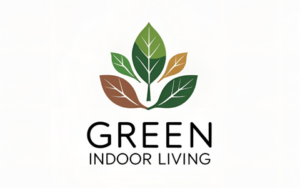Ever wondered if compost is good for indoor plants? I get this question a lot. Compost is rich in nutrients, but indoor plants have different needs than garden plants. Some types of compost work great indoors, while others? Not so much. Let’s break it down. I’ll share the benefits, risks, and how to use compost inside your home the right way.
What is Compost & How Does it Benefit Indoor Plants?
Compost is basically decayed organic matter. It’s full of nutrients plants love. Gardeners use it to enrich soil, but does it work for houseplant soil? That depends.
Unlike outdoor gardens, potted plants rely only on the soil inside their pots. No worms to aerate, no rain to flush out excess nutrients. That’s why choosing the right potting mix is key. When done right, compost can improve soil structure, nutrient absorption, and overall plant health. But when done wrong? It can cause problems, big ones.
Types of Compost Suitable for Indoor Plants
Not all composts are equal, especially indoors. Let’s look at the best ones:
Multi-purpose compost works for many plants, but it should be light and airy. Peat-free compost is an eco-friendly choice that supports plant health, as multi-purpose compost suggests. Jack’s Magic 50:50 Compost is another balanced blend, recommended for potted plants. Sterilized compost is crucial for indoor use, as it helps prevent pests and diseases.
Using the wrong compost can lead to mold, soil pests, and poor growth. Always check the label before buying!
Key Considerations When Using Compost Indoors
Indoor plants don’t have the luxury of nature’s balancing act, so you need to be careful. Soil aeration is essential because indoor compost should not compact over time. gardening experts highlights that aeration is key. Drainage is another crucial factor—waterlogged soil can kill roots, so good drainage is a must. Compost can also alter soil pH levels, which may stress plants. Too much moisture retention can lead to fungus gnats, an issue no plant owner wants to deal with.
Ignoring these factors can result in unhealthy plants or even a smelly, moldy mess.
Potential Risks of Using Compost for Indoor Plants
Sure, compost is great. But indoors, it can bring problems. Here’s what to watch out for:
Soil pests like tiny bugs can appear if the compost isn’t sterilized. Fungus gnats thrive in damp compost, becoming a nuisance. Soil pathogens, including bacteria and fungi, may spread diseases to plants. If compost isn’t fully matured, it can steal nitrogen from plants instead of feeding them.
Excessive compost can also lead to poor soil structure. When compost decomposes further inside a potted plant, it may shrink and compact, reducing aeration. Without proper drainage, this can suffocate the roots. Another hidden risk is nutrient imbalance—homemade compost varies in nutrient levels, so it may contain too much or too little of what a plant actually needs.
To avoid these issues, always use mature, sterilized compost and sift it before adding to pots.
How to Safely Use Compost Indoors
Want to use compost safely? Here’s how:
Sifting compost removes large chunks, sticks, or unbroken-down material. Soil sterilization is an important step—baking compost in the oven or purchasing pre-sterilized options can prevent problems, . Worm castings are a great alternative to raw compost; they are odorless and rich in nutrients, highly recommended by The Spruce and trusted gardening sources. Mixing compost with potting mix helps create a balanced blend for indoor plants.
Compost should only make up 20-30% of your potting mix. More than that, and your plants might not get the right balance of aeration, moisture, and nutrients. It’s also important to monitor soil moisture retention. If compost holds too much water, it can lead to root rot and other fungal diseases.
Using compost straight from the bin? Bad idea. Always treat and mix it first.
Best Practices for Healthier Indoor Plants
Compost alone won’t keep plants thriving. To get the best results, choose the right soil conditioner, Maintaining proper soil structure is another key factor, as excessive compost can lead to compacted, lifeless soil. Regularly checking for pests helps prevent infestations before they become a major issue. Keeping an eye on plant health is essential; yellow leaves or wilting may indicate compost adjustments are needed.
If you want to improve soil aeration, mix compost with perlite, sand, or coco coir. These materials create space for roots to breathe. Soil pH level is another factor—some composts are too acidic or alkaline, which can affect nutrient uptake. Testing your soil with a simple pH kit can help ensure plants get what they need.
Mixing compost into houseplant soil is an art. Do it right, and your plants will love you for it.
Final Thoughts on Using Compost Indoors
So, can you use compost for indoor plants? Yes—but be careful. Not all compost works well indoors. Choose the right type, watch for soil pathogens, and always ensure proper drainage. Compost can boost plant health, but only when used correctly.
If you decide to make your own compost, ensure it’s fully broken down and free from pests before using it indoors. Want thriving indoor plants? Balance is everything. Experiment, adjust, and enjoy greener, happier plants!

